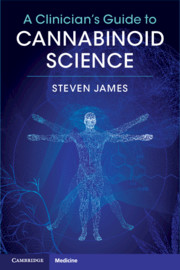Book contents
- A Clinician’s Guide to Cannabinoid Science
- Reviews
- A Clinician’s Guide to Cannabinoid Science
- Copyright page
- Dedication
- Contents
- Preface
- Section 1 An Introduction to Cannabinoid Science
- Section 2 Potential Therapeutic Uses of Cannabinoids in Clinical Practice
- Chapter 6 Cannabinoids and Pain
- Chapter 7 Cannabinoids and Neuropsychiatry
- Chapter 8 Cannabinoids in Sleep and Circadian Rhythms
- Chapter 9 Cannabinoids and Inflammation and Autoimmune Disorders
- Chapter 10 Cannabinoids and the Eye
- Chapter 11 Cannabinoids and the Skin
- Index
- References
Chapter 11 - Cannabinoids and the Skin
from Section 2 - Potential Therapeutic Uses of Cannabinoids in Clinical Practice
Published online by Cambridge University Press: 12 October 2020
- A Clinician’s Guide to Cannabinoid Science
- Reviews
- A Clinician’s Guide to Cannabinoid Science
- Copyright page
- Dedication
- Contents
- Preface
- Section 1 An Introduction to Cannabinoid Science
- Section 2 Potential Therapeutic Uses of Cannabinoids in Clinical Practice
- Chapter 6 Cannabinoids and Pain
- Chapter 7 Cannabinoids and Neuropsychiatry
- Chapter 8 Cannabinoids in Sleep and Circadian Rhythms
- Chapter 9 Cannabinoids and Inflammation and Autoimmune Disorders
- Chapter 10 Cannabinoids and the Eye
- Chapter 11 Cannabinoids and the Skin
- Index
- References
Summary
In this chapter we will review selected preclinical and clinical studies for potential future development of cannabinoids in the treatment of skin diseases. Already there is a great deal of interest not only for the physiological and pharmacological properties of cannabinoids but also the potential benefits of formulations that could be provided as topical. However, this enthusiasm has not yet been matched by any regulatory agency globally and there are no approved indications from the US Food and Drug Administration (FDA), Canada Health and the European Medicines Agency (EMA) on the use of any cannabinoid in dermatology.
- Type
- Chapter
- Information
- A Clinician's Guide to Cannabinoid Science , pp. 137 - 148Publisher: Cambridge University PressPrint publication year: 2020



